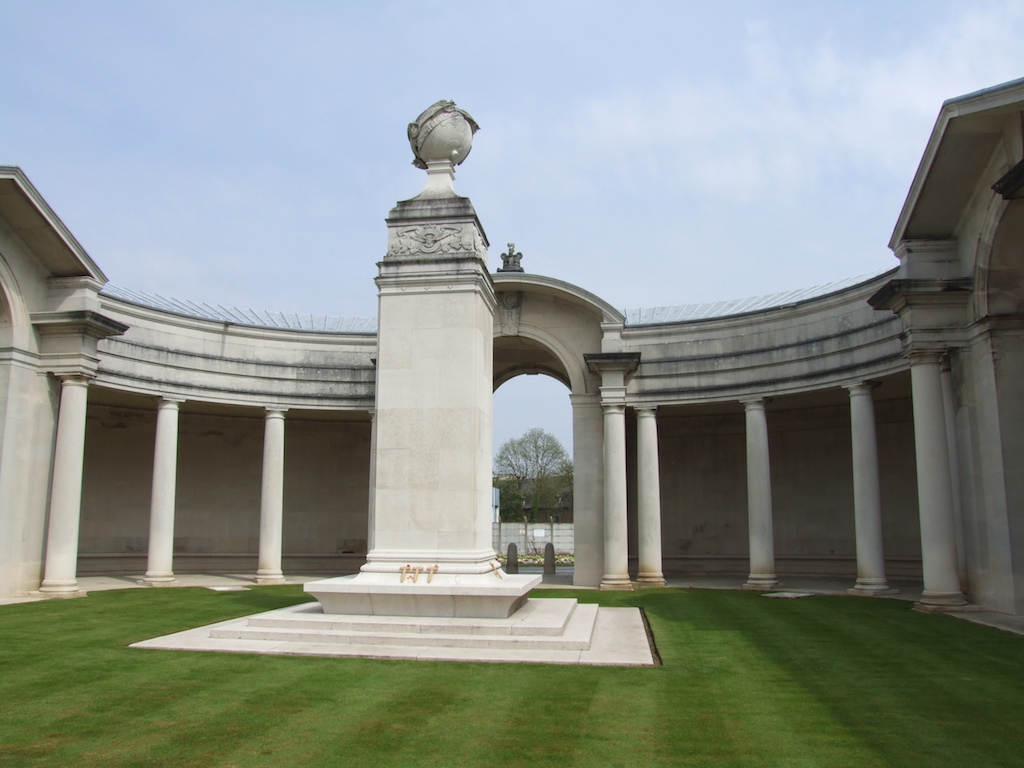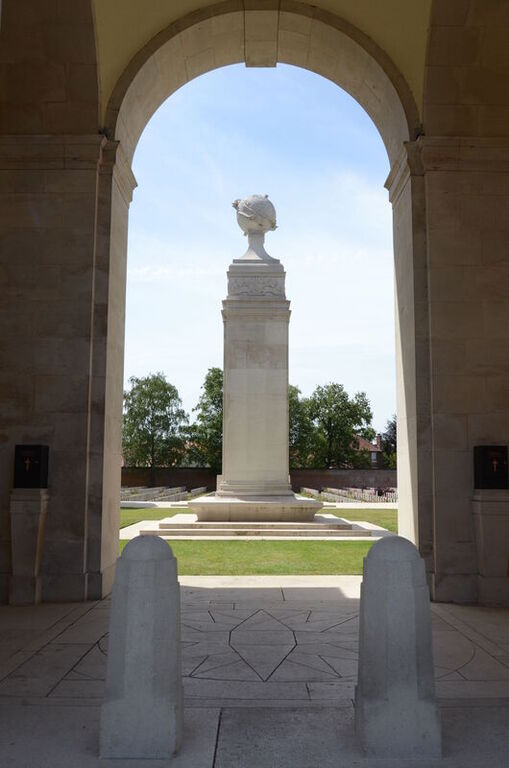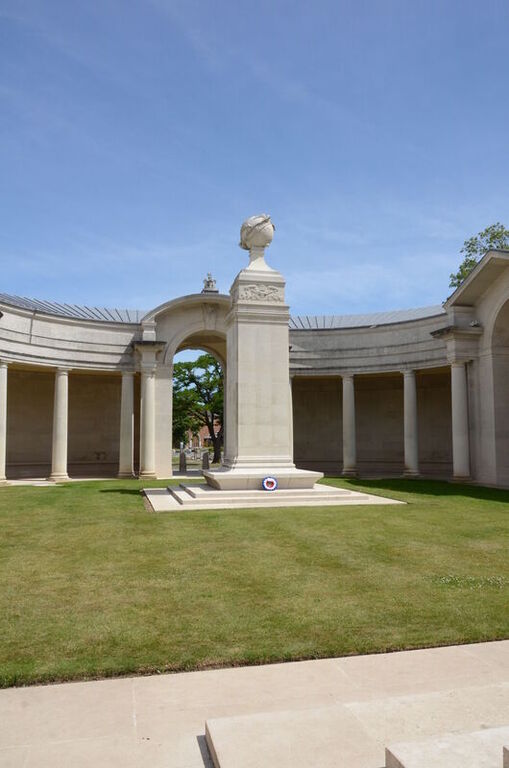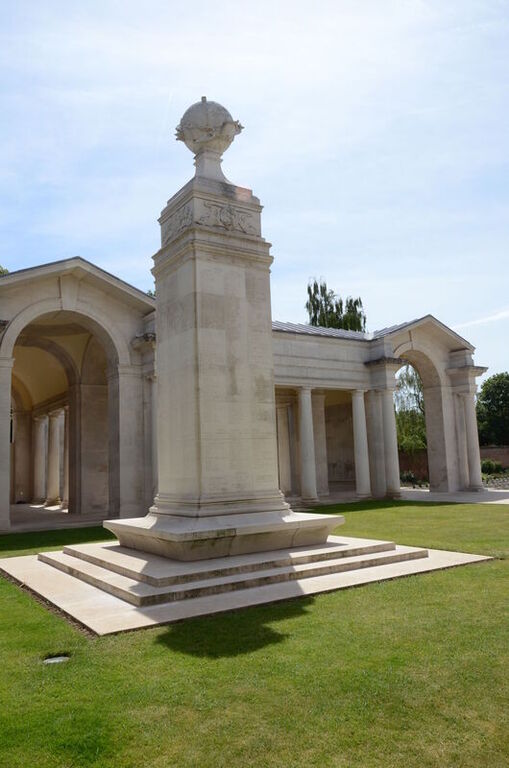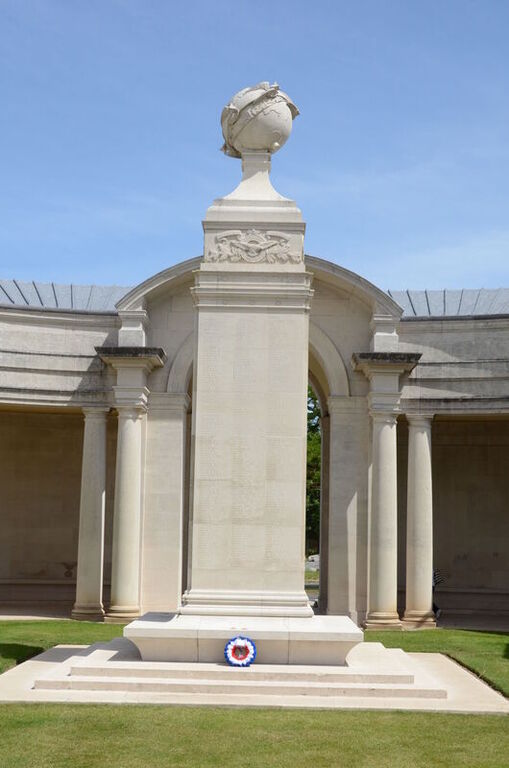Arras Flying Services Memorial
- Country France
- Total identified casualties 979 Find these casualties
- Region Pas de Calais
- Identified casualties from First World War
- GPS Coordinates Latitude: 50.287, Longitude: 2.76039
Location information
The Arras Flying Services Memorial will be found in the Faubourg-d'Amiens Cemetery, which is in the Boulevard du General de Gaulle in the western part of the town of Arras. The cemetery is near the Citadel, approximately 2 Kms due west of the railway station.
The GPS coordinates for the cemetery are 50.28670, 2.76057
Visiting information
The cemetery and Memorial are signposted. The Memorial and cemetery are located on Boul. Du General de Gaulle, immediately north of the Citadelle d’Arras.
The site includes Faubourg d’Amiens Cemetery, The Arras Memorial and the Arras Flying Services Memorial.
PARKING
There is a large car park, Parking de la Citadelle, with space for multiple vehicles opposite the cemetery and memorial, to the east of Boul. Du General de Gaulle. The ground is flat and firm with a tarmac and concrete surface.
There are several pedestrian road crossing points along the main road in front of the cemetery.
Parking is approximately 100 metres from the closest accessible entrance.
ACCESS LAYOUT AND MAIN ENTRANCE
The Cross of Sacrifice is outside the main cemetery on the right-hand side of the to the Arras Flying Services Memorial, alongside the main road. To access the burial area, visitors must pass through one of 4 memorial archways, forming part of the Arras Memorial, located along the length of the memorial. Each has between 1 to 3 stone steps up into the building which should be passed to access the burial area. There is a single width brick border between the footpath running along the roadside, with grass in front of the paved entrances. The northernmost entrance offers step-free access into the memorial. The Register Box for the Cemetery is located on the wall to the right of this entrance.
The entrance closest to the Cross of Sacrifice, at the southern end of the memorial, houses The Arras Memorial and Arras Flying Services Memorial Register Boxes on either side of the entrance, accessed up 3 stone steps and through a large Grecian style rotunda.
There are six separate sets of stairs located along the inside length of the Arras Memorial leading down into the cemetery. There are no handrails on the stairs or railings along the edge of the interior paving of the memorial and the cemetery. There is a drop of up to 1.2 metres down from the paving to the grass inside the cemetery.
Inside the main rotunda is a large Portland stone obelisk. This is the Arras Flying Services Memorial. The memorial is surrounded by grass inside the paved area. There are stone steps surrounding the obelisk, with a decorative seating bench around the obelisk.
The Stone of Remembrance is behind the Arras Flying Services Memorial, on a paved area overlooking the cemetery.
There are stone bench seating areas throughout the memorial inside the Arras Memorial on the inside walls.
All internal paths in the cemetery are grass, the ground is flat and firm. The memorial is paved throughout.
ALTERNATIVE ACCESS
At the rear of the cemetery, halfway along the perimeter wall, on rue Berthe Warret, which runs the length of the rear of the site, is an opening in the tall boundary brick wall.
Access to rue Berthe Warret is via Ave. du Memorial des Fusilles to the south of the site, or Rue Georges Santerne, both of which run west from Boul. Du General de Gaulle.
There is a 3-metre wide, 2 section black ornamental gate in the opening. The gate has a central up/down and twist turn handle, is pushed inwards into the cemetery, The ground is flat and firm with a grass surface. There is a slight drop from the paving to the grass, approximately 25 mm.
ADDITIONAL INFORMATION
The cemetery and memorial are permanently open.
History information
The French handed over Arras to Commonwealth forces in the spring of 1916 and the system of tunnels upon which the town is built were used and developed in preparation for the major offensive planned for April 1917.
The Commonwealth section of the FAUBOURG D'AMIENS CEMETERY was begun in March 1916, behind the French military cemetery established earlier. It continued to be used by field ambulances and fighting units until November 1918. The cemetery was enlarged after the Armistice when graves were brought in from the battlefields and from two smaller cemeteries in the vicinity.
The cemetery contains over 2,650 Commonwealth burials of the First World War, 10 of which are unidentified. The graves in the French military cemetery were removed after the war to other burial grounds and the land they had occupied was used for the construction of the Arras Memorial and Arras Flying Services Memorial.
The adjacent ARRAS MEMORIAL commemorates almost 35,000 servicemen from the United Kingdom, South Africa and New Zealand who died in the Arras sector between the spring of 1916 and 7 August 1918, the eve of the Advance to Victory, and have no known grave. The most conspicuous events of this period were the Arras offensive of April-May 1917, and the German attack in the spring of 1918. Canadian and Australian servicemen killed in these operations are commemorated by memorials at Vimy and Villers-Bretonneux. A separate memorial remembers those killed in the Battle of Cambrai in 1917.
The adjacent ARRAS FLYING SERVICES MEMORIAL commemorates almost 1,000 airmen of the Royal Naval Air Service, the Royal Flying Corps, the Australian Flying Corps and the Royal Air Force, either by attachment from other arms of the forces of the Commonwealth or by original enlistment, who were killed on the whole Western Front and who have no known grave.
During the Second World War, Arras was occupied by United Kingdom forces headquarters until the town was evacuated on 23 May 1940. Arras then remained in German hands until retaken by Commonwealth and Free French forces on 1 September 1944. The 1939-1945 War burials number 8 and comprise 3 soldiers and 4 airmen from the United Kingdom and 1 entirely unidentified casualty. Located between the 2 special memorials of the 1914-1918 War is the special memorial commemorating an officer of the United States Army Air Force, who died during the 1939-1945 War. This special memorial, is inscribed with the words "Believed to be buried in this cemetery". In addition, there are 30 war graves of other nationalities, most of them German.
Both cemetery and memorials were designed by Sir Edwin Lutyens, with sculpture by Sir William Reid Dick. The memorial was unveiled by Lord Trenchard, Marshal of the Royal Air Force on 31 July 1932 (originally it had been scheduled for 15 May, but due to the sudden death of French President Doumer, as a mark of respect, the ceremony was postponed until July).


